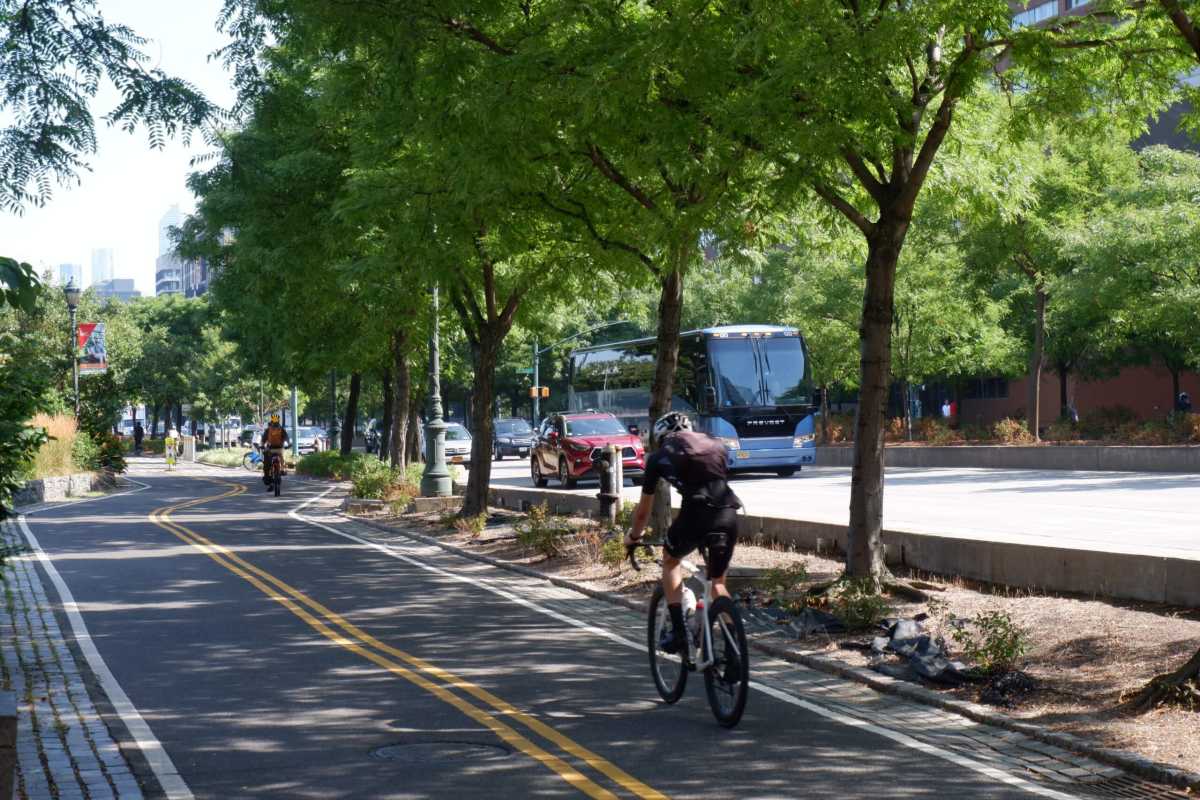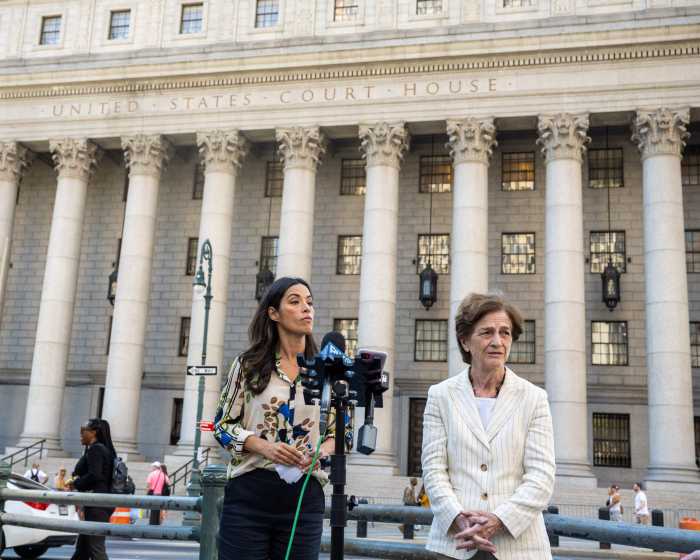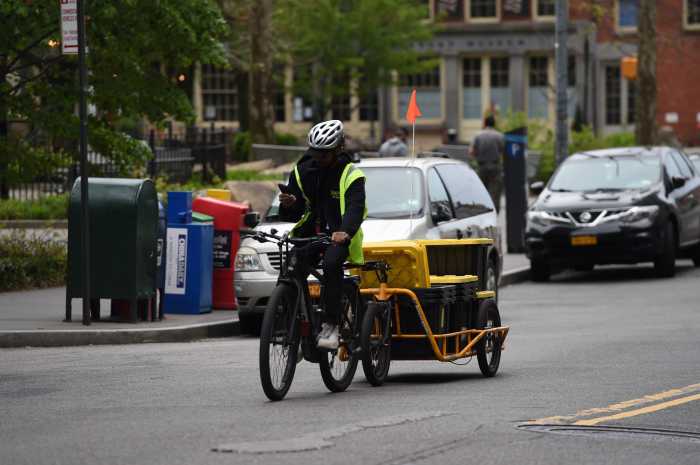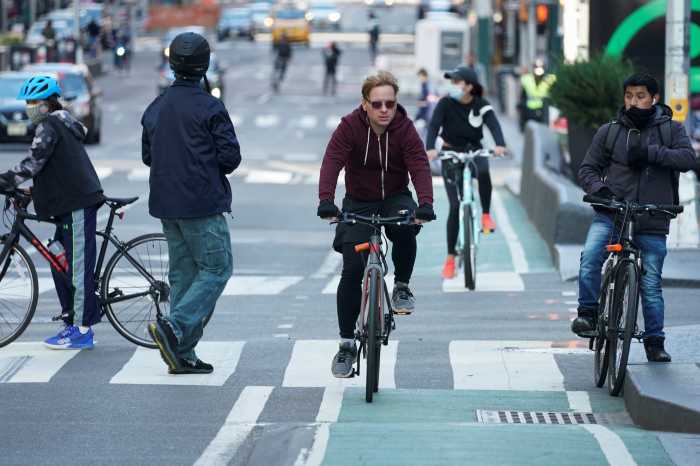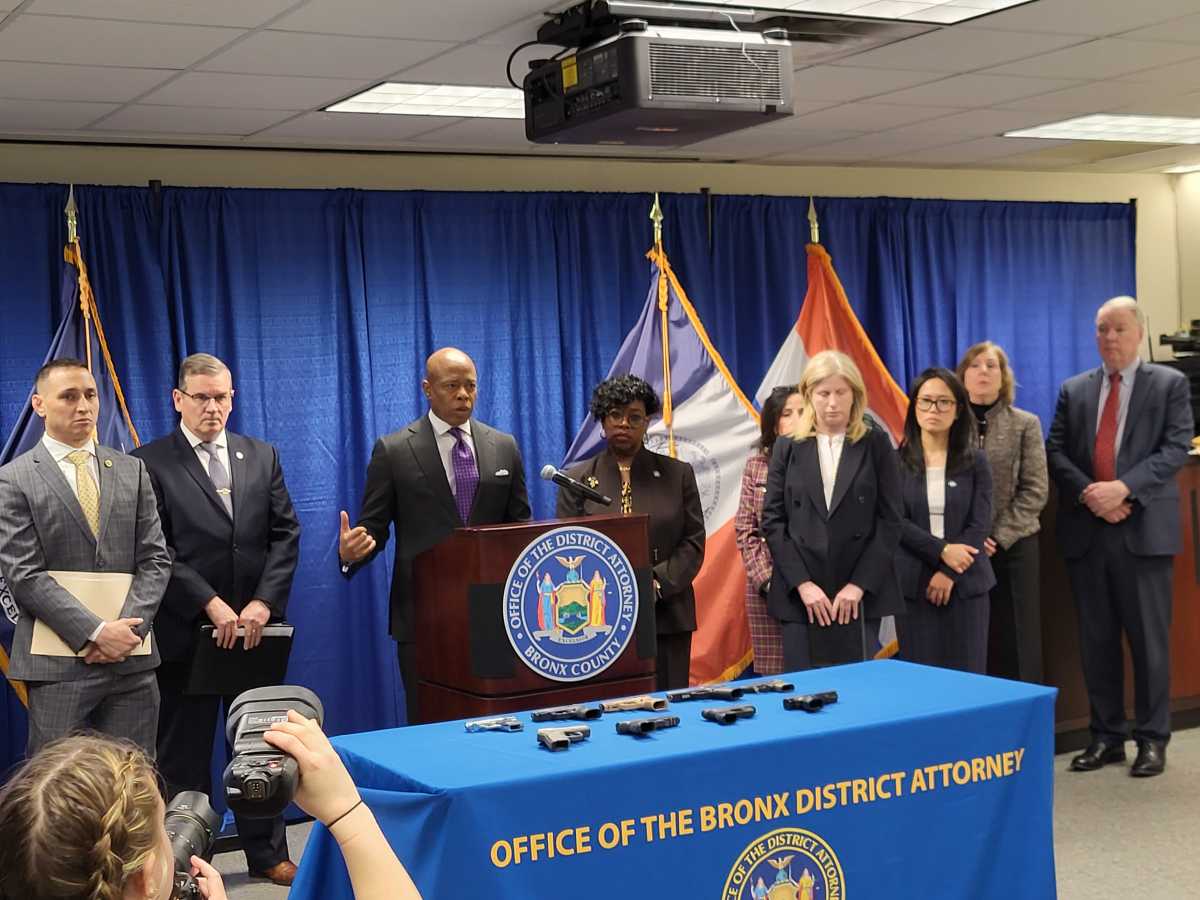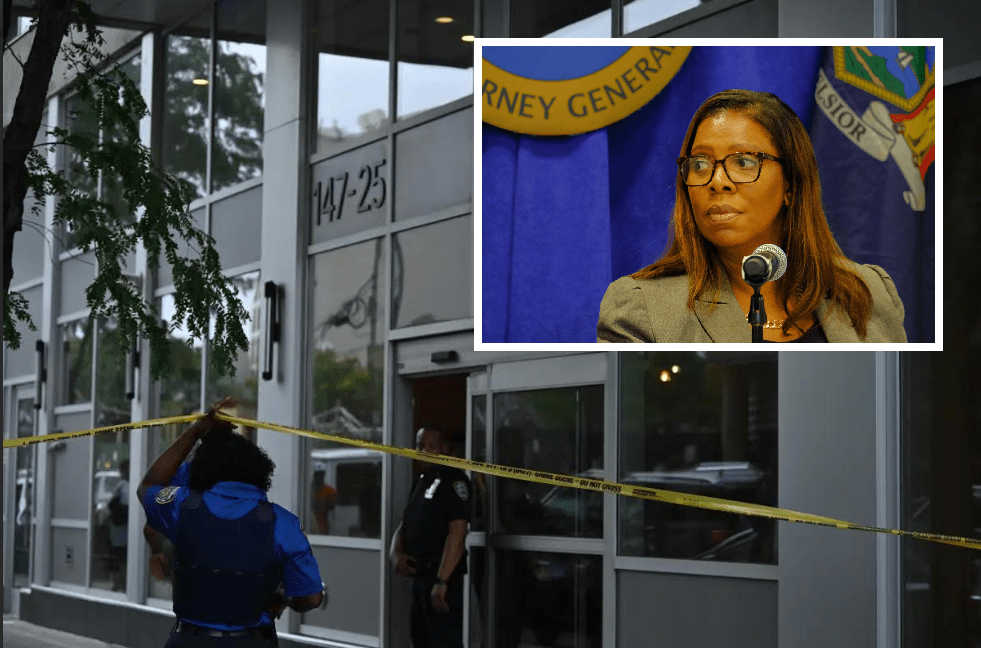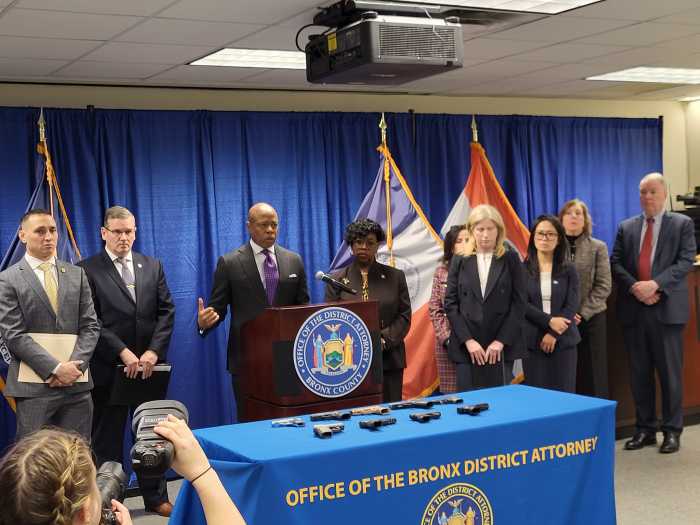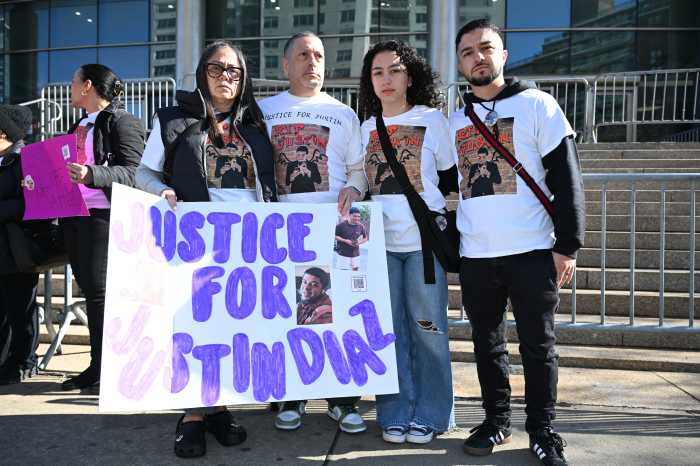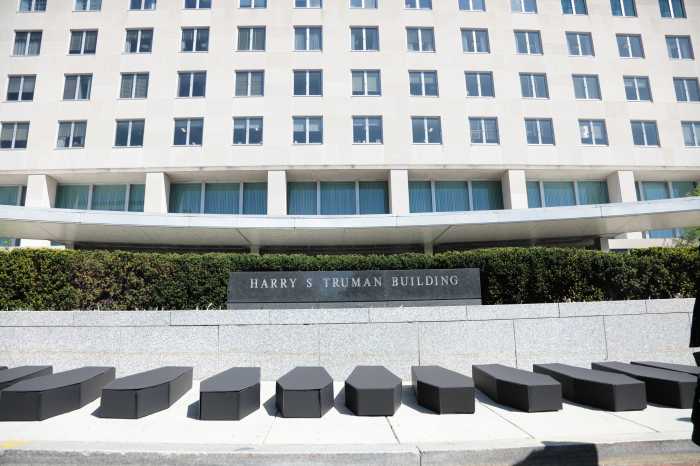The City Council approved a bill Thursday that would require New York to create a master plan for greenways for the first time in three decades, amid a boom in cycling instigated by the pandemic.
The bill requires the city to study and gather community input on locations where greenways are feasible, with a focus on low-income communities and neighborhoods of color which have historically seen less investment in bike infrastructure, and issue a final plan by December 2024, with an update in 2026 and every five years thereafter.
The city will also have to create an official map of current, under-construction, and planned greenways, plus status updates for segments that are temporarily closed.
“All of us are here today because we believe in a future where New Yorkers of all backgrounds, ages, and abilities from every neighborhood, in every borough can easily find open space, and safely access active transportation,” said Manhattan Council Member Carlina Rivera, the bill’s main sponsor, at a press conference ahead of the City Council’s stated meeting on Thursday.
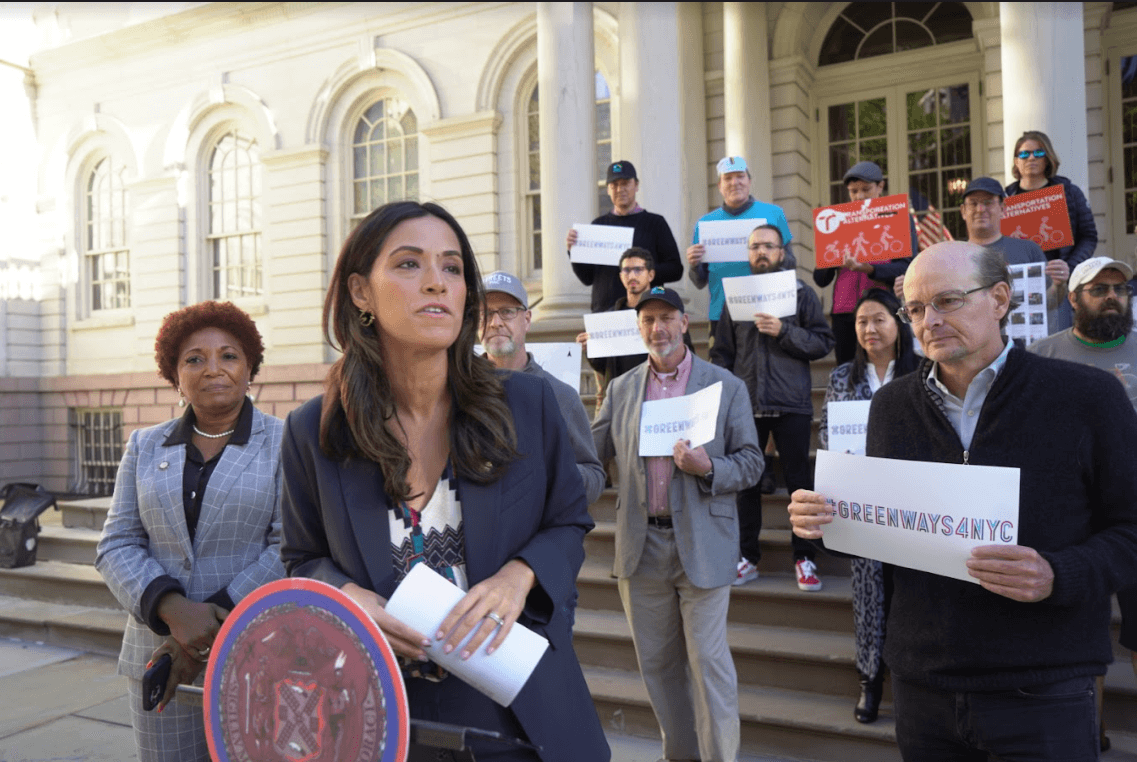
Greenways, in essence, are highways for cyclists and pedestrians; they differ from regular bike lanes by being significantly separated from any motor vehicle traffic, which is banned on the greenway itself. Cycling advocates have long pushed for a fully-connected greenway around the city, utilizing waterfront space and inland rights-of-way throughout the five boroughs to enable safe, frictionless, environmentally-friendly travel.
The need for a full, connected greenway network has been recognized for a long time: the last citywide greenway plan was unveiled in 1993, during the administration of the late Mayor David Dinkins. But thirty years later, the city’s greenways are not an integrated travel network but a hodgepodge of paths of inconsistent quality.
The greenway push was renewed after the city won a $7.25 million grant from the federal Department of Transportation to build new greenway segments and maintain existing ones. It also comes amidst a boom in biking generated by the pandemic: daily cycling trips have more than doubled since 2011, according to the city DOT, with estimates north of 200 million bike trips in 2021.
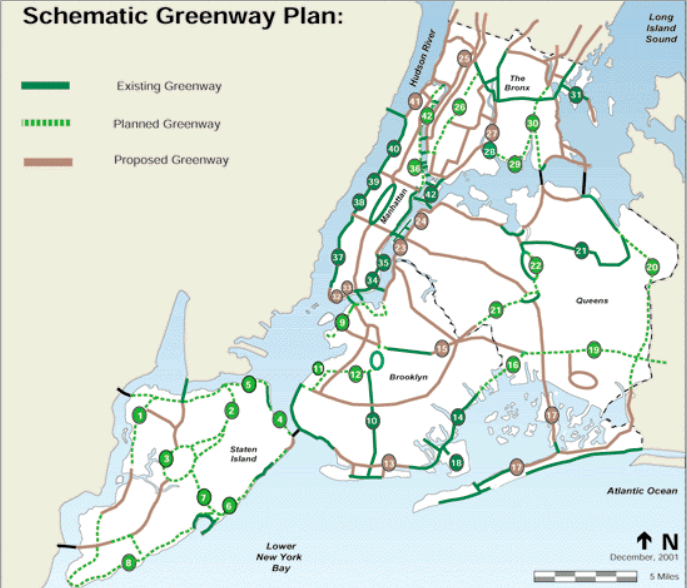
“After the pandemic that prompted a cycling boom here in New York City, it’s clear that we need to invest in our greenways and meet people where they are,” said Queens Councilmember Selvena Brooks-Powers, chair of the Transportation Committee. “We have a Breal opportunity here to make a profound impact on our greenways now.”
Bike advocates applauded the bill’s passage, which was nearly unanimous save for a single no vote by Brooklyn Councilmember Kalman Yeger. Jon Orcutt, of Bike New York, said that the bill gives an opportunity to make “real infrastructure” for cyclists instead of just flimsy paint.
“The bill passing is great news,” Orcutt said. “The city has been trying to paint its way to bike-friendliness with very mixed results. Let’s build more real infrastructure for cycling and start with a citywide plan.”



